Built from the abandoned buildings of his childhood hometown of Red Oak, Missouri, as well as several other old ruins from across Route 66, Red Oak II is a unique oasis of small-town America, hidden just off the Mother Road. Complete with a classic Phillips Gas Station, the old house of notorious outlaw Bella Star, and the general store that Davis grew up in. Like the vintage buildings and scent of yesteryear that hangs around Davis’ work, the artist himself is a respected and well-loved addition to Route 66 and the Americana that the highway signifies to a myriad of travelers globally.
We spoke to Davis about his life and work, his trials and heartbreaks, and what life is like in the living museum of Red Oak II.
What are some of your earlies memories in Red Oak?
Oh, it was a small town about 23 miles from here. It wasn’t on 66, but it was just off of it about a couple miles. And it had an old general store, which I lived in the back of it, and about everyone in town were relatives of mine. All my aunts and uncles lived there as farmers. So, I don’t know, just a great experience living in this little community like that. But it’s like all those little communities that had a general store and everything. And when the cars come along, you know, faster cars ... it started, they wouldn’t shop locally, and they’d be going in their cars to Joplin or Springfield. So, all those little towns supporting them just kind of fell by the wayside. And there’s nothing there anymore; I mean nothing. I got quite a few of the buildings out of there before it turned into a ghost town. I got the old general store that I was raised in out here, and I’ve got my grandfather’s blacksmith shop. After I got all the buildings out of Red Oak, I started on Route 66, because they were all basket cases when I got them, you know? If I hadn’t have saved them when I did, they’d never had made it. I got two gas stations off of 66, and it was only a mile away or two miles away, 66 from Red Oak.
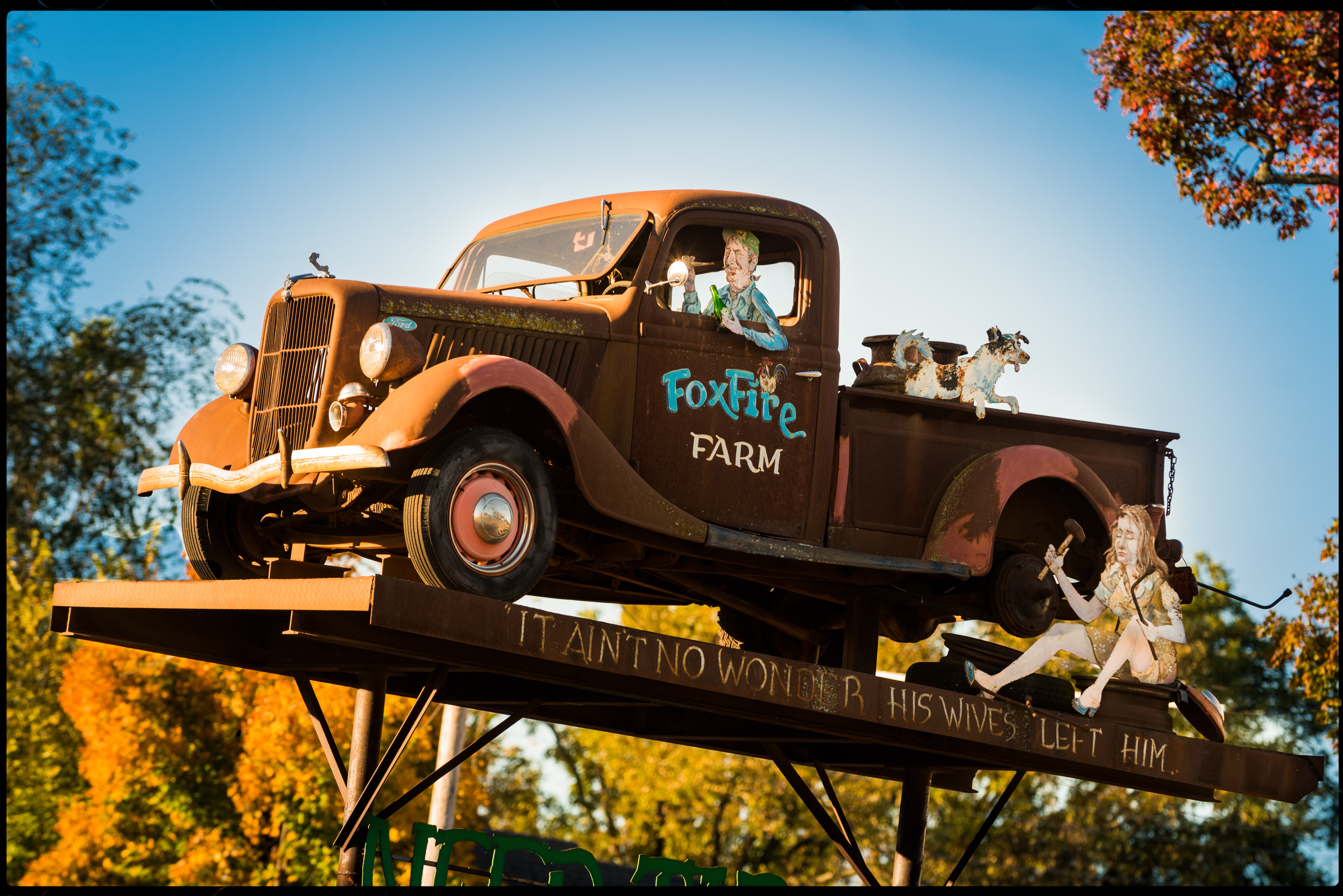
We lived on 66 for a while, my dad had a gas station, and he was a mechanic in this little town called Rescue. So, that’s where we lived. Then, I don’t know, my dad moved to Carthage and bought another gas station, so I lived there till I got out of high school. And then I went into the military. When I got out of the military, I went to the Dallas-Fort Worth area, and I was an art director for a big ad agency down there for 13 years. And for all those 13 years, all I could think about was getting the hell out of there, getting back to Missouri, and getting a farm back here. So, I made the break, I bought my farm, started pitching it up and buying all the animals on the farm. I didn’t buy many of them, just enough for my models and my figurines and my sculptures. We had cows and sheep and goats and pigs and horses - workhorses and barley horses, and I played farm.
You know, I had all the equipment, and I just played farm with horses. I happened to have a worker that worked out here who knew about horses and how to work them, so he taught me. And I used them for my sculptures, that’s how my figurine line took off, because no one was doing the farm scene when I was developing this, so I was the first. And I was relating to people in my work, relating to people who were raised on a farm in a small town, and so, that led to the success of my figurine line.
What was the Davis household like growing up?
Oh, we lived with the grandparents. You know, back then the grandparents moved in with the family. They’d spend a month with one and move around to the other. We were all very close. It was just a good way of life, a lot of memories.
Is it true that your great great grandfather was the first to plow the fields in Red Oak?
He was the first one to plant the fields there.
You failed Art class in high school. That seems somewhat ironic considering that you eventually became an artist.
I failed Art, and English in my sophomore year. So, I quit and joined the air force. My art teacher was a coach, a football coach or something, and I told him one time that, “I know more about art with my little finger than you do!” And that p*s*ed him off. So, I got an F on that one. And then English, I failed English, and now I write books and illustrate, so what can you say?
What was it like in the Air Force?
Great, I was a crew member, it was a four-man crew, back before there were jets you know? It was the old prop chops. So, I flew over Europe and Africa, and it was just a great life. I had a little plane mishap in Africa. There was a war going on down there between the French and the Algerians. We couldn’t fly very far because of the props. We would go about 600 miles before we had to refuel. So, when we were going across Africa, we’d go to Casablanca and Libya and Algiers. And coming into Algiers, it was a French base, but it was in Algerian territory, so when we were coming in for a landing, the Algerians would sit out there and shoot at us with their rifles. We had bulletproof jackets, and so we [would] just sit on them, because if we were going to get it, that’s where we were going to get it. So, we landed in Algiers, and it was all dark, and we looked up, and the Algerians had snuck a bunch of concrete blocks across the runway. So we cut the nose wheel over, but the main gear hit it and [got] caught on the runway. I went through the instrument panel, and I got a medical discharge out of that one.
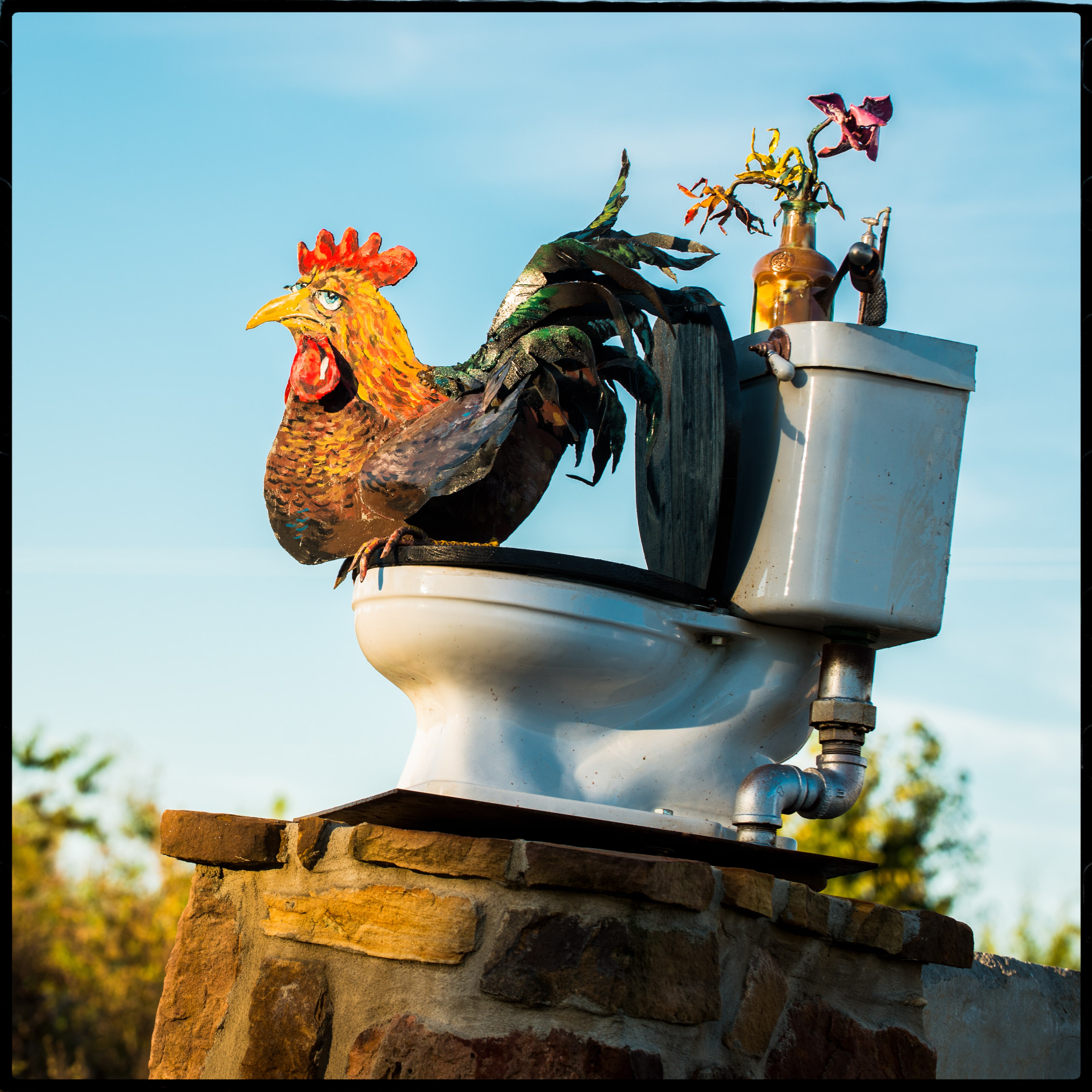
I think that I was the first casualty by Algerians to Americans during wartime, or maybe not, I don’t know.
You’ve worked in a large variety of mediums, what was your first love?
Painting I guess. I’ve painted for quite awhile. I was a cartoonist for many years; if you look up Sex to Sexty, S-E-X-T-O-S-E-X-T-Y, I did the covers for them for about 25 years. It was a cartoon magazine, pretty risqué; you can check that out. I went under the name Pierre Davis in that; I didn’t go by Lowell. I didn’t go by Lowell until I moved back to Carthage on the farm. Then I cleaned up my act and got religious, so I’m not doing cartoons anymore.
What was it like to return to farm life after so many years in big city Dallas?
Oh I loved it, I loved it. Down there I didn’t enjoy my days, you know? I just wasted them. And now [since] I moved back to the farm I enjoy every minute of it. Going to bed early at night, getting up early in the morning, it’s just a world of difference living in the country vs. big cities.
And this is also when you begin traveling and selling your art on the open road?
Yeah, when I started working for [a company] called Schmid’s, they were distributors and over 2,000 gift shops sold my figurines. They would want me to come, after they sold them awhile, they wanted me to come and meet their collectors, and sign figurines. So, I did that for many years. They used to fly me first class, and I’d stay at the big hotels and everything while I was going to these shows. But that even got to me, so I got this old medicine man’s motorhome, from the 1920s, or it was a 1932 medicine man’s motorhome. It looked like a caboose going down the road. It had kerosene lights; I dropped it on a brand new chassis, so it ran 80 miles an hour. I’d pass a convoy of trucks with wooden shingles flying off my roof.
Do you have any fun Route 66 memories from your days on the road?
Lots of them. Are you familiar with my signs? I just put a new one up, if you look it’s called ... it’s a long tall pole that is in front of a garage, a shop, a welding shop, and on top is a Route 66 emblem with a bird on it singing, like a cardinal singing, and if you [look] down, I took a windshield out of an old Model A and the grill out of a ’32 Ford. Underneath that, it’s got the headlights over it, and the bumper is smiling. And it says “Route 66: Smiles all the Way.” I’m doing a lot on 66. I’m trying to stay on 66 within all my figurines. I don’t truly accept many commissions for some other towns, because I’m trying to fill up 66.
Have you seen the old road change much over the years?
Oh yeah, it’s terrible, there’s just nothing left, and if I hadn’t got what I got, they’d be gone by now. But there’s still interest in the route, you know, I love it. I still travel when I have a chance, lots of good memories.
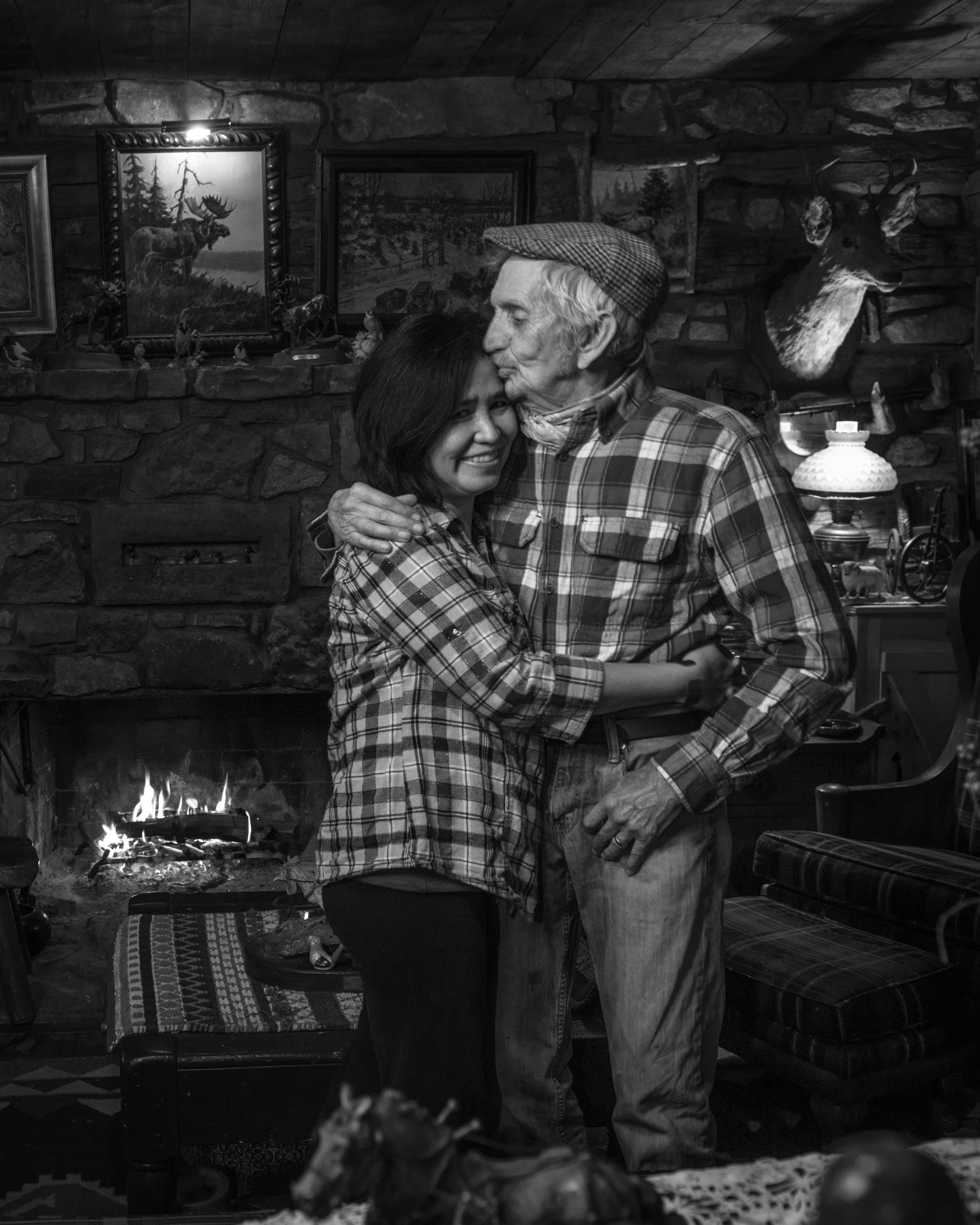
My folks used to travel to California when we lived in Missouri at Red Oak. We’d go to California maybe once a year, and we went through Old Route 66. And I saw all the mom and pop businesses out there and that always impressed me. They’d say ... you know, farmers would be sitting on the front porch, watching all the cars go back to California. So Pa would turn to Ma and say: “Why can’t we set up some kind of a little business here and then we could draw all those people in and sell them something?” A garage or a motel or cabins or a restaurant or something. That’s how it was developed mostly, people trying to figure out how to make money off all those cars going back and forth to California.
True yeah, so your father had a gas station on the route for a little while.
And a garage, yeah for a short time.
And business was good?
Oh, I don’t know, probably, but my dad was a rover. We’d pack up and go to California, and then we’d pack up and go to Colorado and live there for a while. Finally, my mom told him: “Burton, I’ve gone everywhere you want to go, and I’ve done everything you wanted to do ...” And I was living on the top of the mountain in Colorado at that time where the clouds would blow you away, so she said “I just can’t do this anymore.” We finally moved back to Carthage, Missouri and my dad bought that gas station. So, that was the end of our traveling except for going on vacations.
What role does your Christian faith play in your life? And how do you think it affects your work?
Oh, I don’t know, you caught me on that one. Not my work as much as my life, you know? It helps me so much in my life. I just put my faith in the Lord and don’t worry about it anymore. I say, “Lord, provide my needs and my family’s needs.” And that’s what he does. So, I’d think this is the last job or something and then two more come up. So I recommend it highly.
You were raised in a Christian family, do you find that your faith deepened as you got older?
Yeah well, it got away from me for about 20 years when I was in the Air Force. I still believed, but I didn’t go to church or anything like that, but I was a Believer. Then I got back into church. We have our own church out here in Red Oak, and so I attend that.
How did you and Rose meet? Is she very involved in your work?
Oh, for sure, she’s Filipino, and what it was, there’s someone down here, another artist down here called Sam butcher. [He has] his Precious Moments figurines. He made millions off his figurine line; they were sold ten times more than my figurines were sold, and he’s a dear friend of mine. And I was going through a divorce, and I was really bummed out for two years, I didn’t do anything. I had a cabin down in Noel, Missouri, a little town in southern Missouri by the river. And I would just sit down there all day and all night in the chair and drink and feel sorry for myself. And so Sam Butcher, he had a big complex there, his Precious Moments it’s, big, big ... but he lives in the Philippines. He’s one of those people that works half of his life trying to become famous and after he’s become famous he spends the rest of his life trying to hide from the monster he created. And he comes back a couple times a year. And he was back; we went out to dinner that night. I didn’t talk to him about my troubles or anything, but he knew something was really going bad in my life.
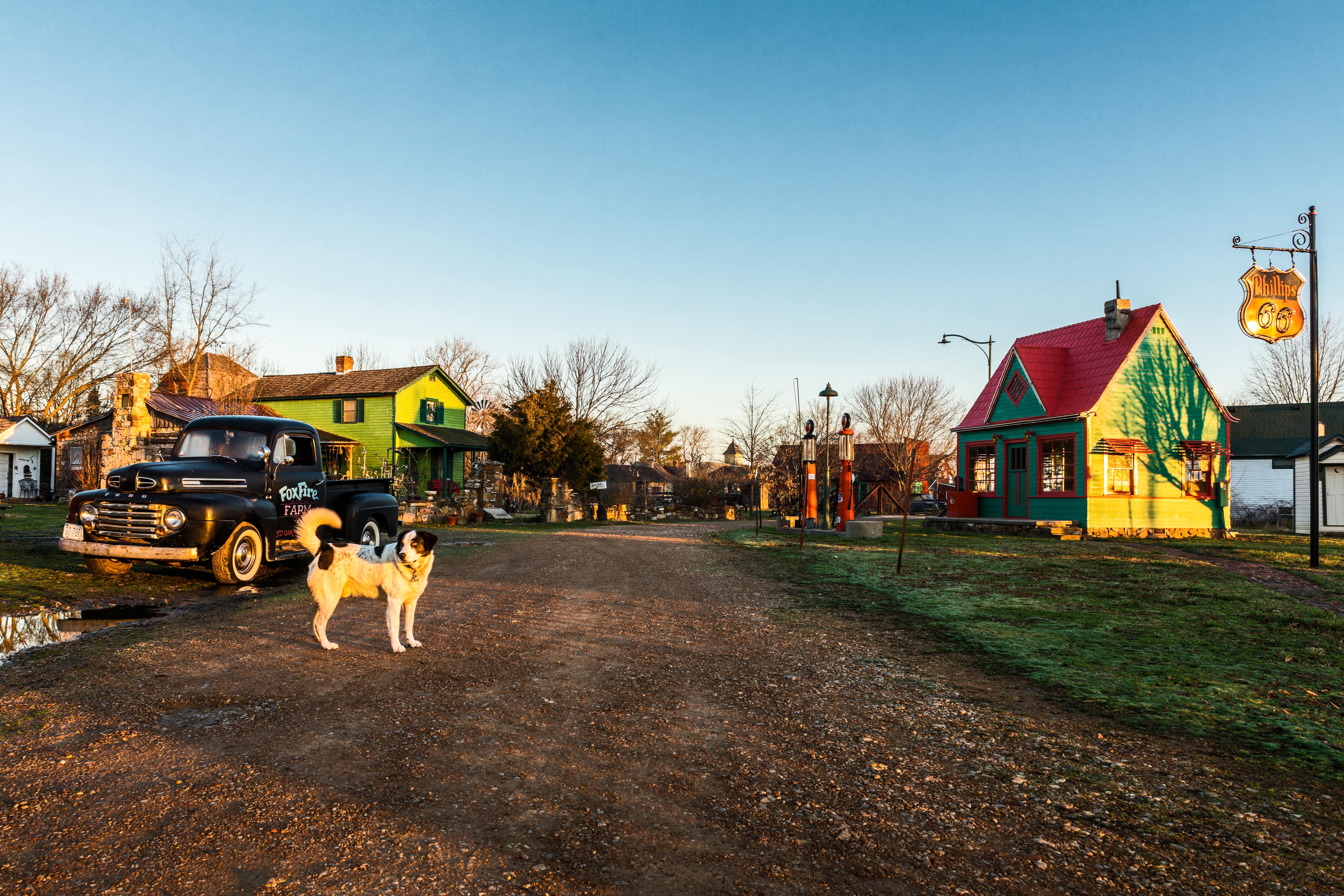
So the next day, he drives on my barn lot and I walk out there, and he says, “Hey Lowell, I’m going to give you a Christmas present!” And I said, “What’s that?” And he said, “All-expenses-paid trip to the Philippines for 2 weeks.” You know, first class. Nine days later I’m in Manila, and then we went down to a little island where he was building another complex at, about 200 miles south of Manila. So, we spent a couple days down there, and then we went back to Manila, his hometown. He had these big plans; we were going to go to Thailand and all these places. But he wanted to take me out to dinner at his favorite restaurant; there was a big Chinese restaurant there in Manila. And we went there, and being that Sam was such a good customer of theirs, Rose sat down with us, Rose was a manager there in this restaurant. And so, she sat down with us, and half an hour later I had her eating out of my hand, you know? So, we spent a couple of days together, and I looked at Sam and said, “Sam, just go ahead and go on your vacation, I think I’ll just stay here with Rose.” And so he started on her paperwork, getting her paperwork done, and I came on home. And thirty days later he flew her over here, so I go to Springfield, Missouri, and picked her up at the airport, and he turned around and flew back to the Philippines. That’s what happened. We got married, and happily ever after.
See, I’m 80, and she’s only ... she’s 25 years younger than I am, so I’m very lucky. I can’t get around anymore, so she waits on me hand and foot and spoils me rotten. But I deserve to be spoiled rotten after the last two wives. She does all my paperwork, she keeps me updated on Facebook and everything, so she’s a great asset.
So you began using your personal funds to save buildings from Red Oak a while ago, what was the first motivation to do this?
It was the general store, it went vacant, and there was no one running it any longer, and it was falling apart, so I just had to save it. I just packed it up and moved it here, put it back together and furnished it all up like an old general store. But then a divorce took care of all that stuff. And then that was just my house.
How much would it cost to move a building?
Oh probably about $450 back then, its thousands now. But back then it was not too expensive, I could afford it. None of them came over $1,000 to move, but now its $2,000 or $3,000 just to move the smallest building. I did it at the right time, that’s for sure; I could not afford to build Red Oak today, no way. And I sold it off to other people, all of it except I kept my house. And I let them pay taxes and promote it and all that, I just sit and enjoy.
I didn’t build Red Oak for money. I don’t charge anybody to come here, donations are welcome, but I don’t charge anybody. I just like to see people enjoying themselves, and kids coming out and playing and enjoying church and people. That’s my payment. I sit on the front porch and watch them and spend my day that way. I’m glad I sold it because I could never keep up with it now. I can’t even keep up with the upkeep of my own house, much less all those buildings. And one of the owners, they bought the restaurant about 5 years ago ... I had a restaurant here, but never advertised it because it was so packed all the time that I didn’t need to advertise it. But the new owners, they locked it all up and shut it down, most of the buildings here, shut them down, lock them up.
So how would somebody go about purchasing a house in Red Oak II?
They’re kind of hard to get, I get requests for them all the time, people asking if I’ve got any for sale. I sold them off, but like, there’s a couple who live in California that bought a house here and can’t make it back very often, so we put it up for sale. One house is for sale now, everybody who visits says, “Oh, I’d sure like to live here.” It’s a little, peaceful village. This is the perfect place to live. Of course, you have neighbors, because I sold off to the neighbors, and sometimes the neighbors give you problems. But other than that, everybody loves it, everyone comes out here with the children. We have music every Saturday night at the church, everybody brings a potluck.
Do you think that the idea of Red Oak could be replicated elsewhere?
I don’t know if there are enough old buildings left, you know, anywhere. There’s none left here, around this town, I’ve got them all. So, I don’t know how anybody would start unless ... and I don’t know why anybody would start because there’s no money involved in it. Not many people will do something for the love of it when there’s no money involved.
You’ve been creating a lot of new sculptures around Carthage and along Route 66 recently. What inspired this creative burst?
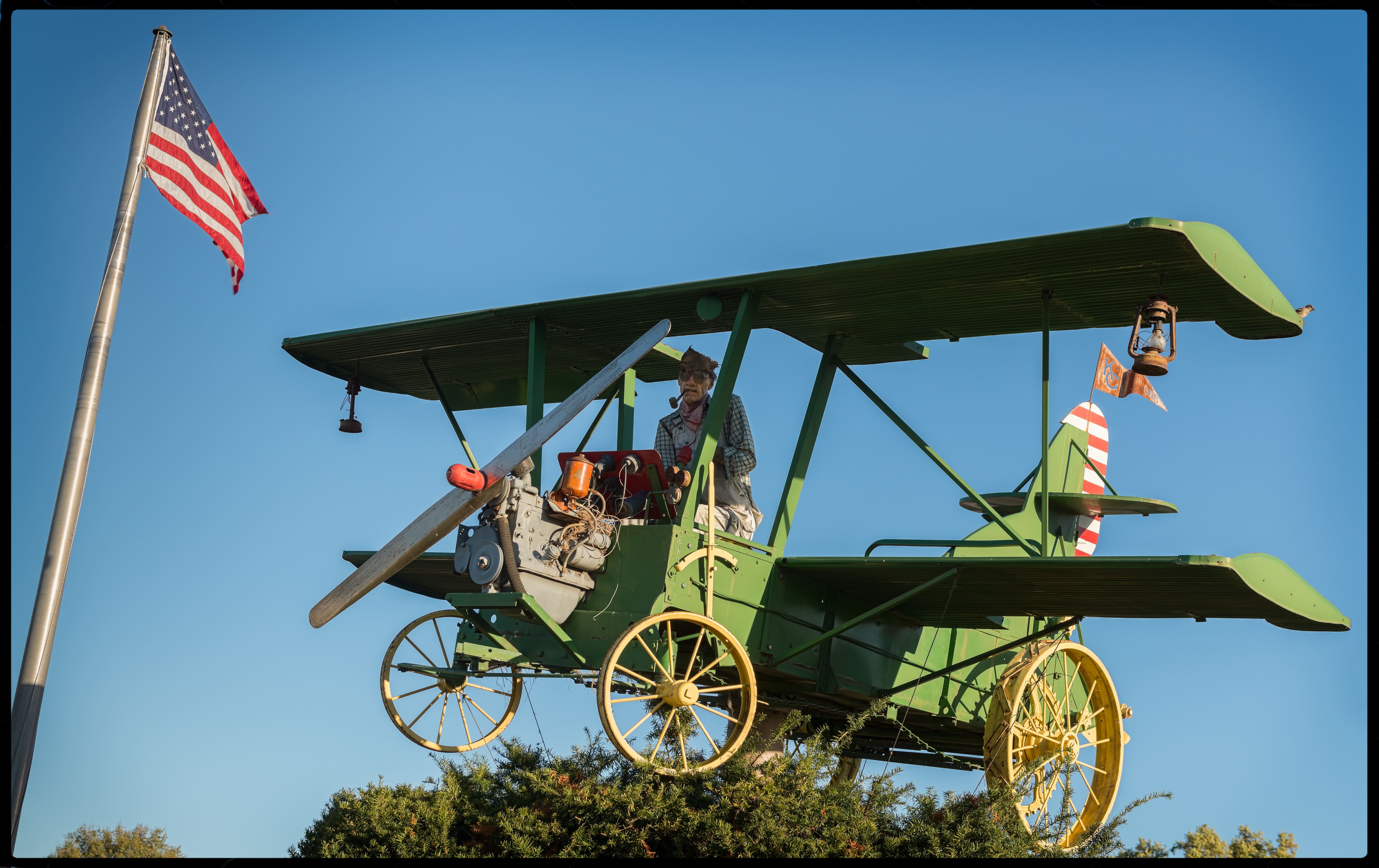
I was a painter and sculptor all my life. I had probably done a couple of signs, you know, metal signs and junk signs, that kind of thing. And then I got arthritis in my wrist, and I couldn’t paint or sculpt anymore, so I had to say, “What am I going to do?” I got so down and depressed about of it, so I said, “I know what I’ll do, I’ll reinvent myself.” And that’s what I did; I reinvented myself. That’s where making the signs ... most of them are antiques, you know, I add things to them to make them come alive. And it just took off, I’m twenty behind right now or more. I probably did forty signs here in the area, and some of the surrounding towns, but mostly outside of town on 66, or close to it.
One of your signs was actually deemed a little too risqué for the community, so you just put it up temporarily.
It was on 66 just before you come into Carthage. I took an old wood cook stove, a heating stove, one of those potbelly ones. I put it out on poles and did this sexy, heavy-set sexy woman ... well, actually, you can see it on Facebook, she was trussed up in the stove, and her breasts are sticking out, and her ass was sticking out underneath the rope. Some people were saying: “This is going to cause a lot of wrecks!” because it was out there on a curve. So, I took it down and moved it to Carthage, it’s in Carthage Square, there’s a lot of businesses around Carthage Square, and I put it in the window of an art gallery there. And I replaced the woman with a snowman. I could have probably kept it and did something with it, but it was just a publicity stunt, you know? Get people talking about my signs.
Do you have a favorite section of Route 66?
I’m not much for Illinois and on up ... up to Chicago. I’m more from here on west, that’s my favorite part I guess. You know, Oklahoma, Texas ...
What makes Route 66 in Missouri special?
I guess everyone’s just heard about it all their life. I don’t know what makes it special.
What are you working on right now?
Signs, I’m so far behind on them. My health is not good enough that I can do it a lot. I have somebody to weld for me, and all that. I have three beautiful daughters and growing up I told them, “I don’t care who you marry, so long as one of you marries a welder.” So, my youngest daughter answered my prayers. He’s 6’4, we gave our farm to our daughter and him, and we moved over to Red Oak. So it’s really handy, they’re right next door, so, I work with him building things, and I’m enjoying every minute of it.
